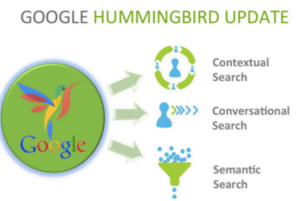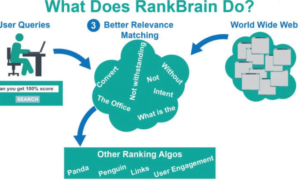A Guide to 9 Major Google Algorithm Updates

Embarking on an aspiring journey to explore the top 9 Google algorithm updates, this post delves into the rapidly shifting digital marketing domain. As a major player in this dynamic field, Google’s latest algorithm updates can trigger the change, shaping the digital world. The quest is to uncover the impact of these Google algorithm updates on SEO and Digital Marketing strategies, enabling one with the latest knowledge to stay on top of the employment curve.
What is the Google Algorithm and what role does it play?
Being a difficult programming element, Google Algorithms play a major role in finding the best-matching results from its index and helping search engines resolve the queries of users. Google algorithms also help in ranking websites and webpages in the SERPs according to their content relevancy and originality. Google Algorithms are a collection of complex rules and norms that critically assess several factors while delivering high-quality, original, and relevant content as per users’ searches. Along with these, algorithms also address several other factors including the usage frequency and placement of relevant keywords, user experiences, the website’s structure, mobile usability, human-made content, and its originality and backlinking.
Below, this article has presented a detailed list of major Google algorithm updates in a yearly sequence.
9 Major latest Google Algorithm updates
#1. Panda Update (2011)

The Panda update was introduced by Google in the year 2011 and the main focus of this Google algorithm update was thin and duplicate content. The main purpose of this update is to enhance the search results by reducing the visibility of websites containing duplicate and thin content along with irreverent keyword stuffing. This Google algorithm update helps in prioritizing the ones that have high-quality original content. The quality score on the website is assigned by Panda Algorithm update depending on the website’s content relevancy, high quality, and originality so that the users will not get confused while they are on their awareness journey.
#2. Penguin Update (2012)

The Penguin update was introduced by Google in the year 2012 and the main target group was the website that has irreverent and spammy links along with over-optimized anchor texts. The main purpose of this Google Algorithm update is to reduce the ranking of websites that contain spammy as well as irrelevant links. Penguin Update penalizes websites that have spammy and unnatural links to get the best possible ranking in the SERPs. This update places high importance on the natural link-building process with high-quality content followed by opposing the application of Black hat SEO techniques.
#3. Hummingbird Update (2013)

The Penguin update was introduced by Google in the year 2012 and the main target group was the website that has irreverent and spammy links along with over-optimized anchor texts. The main purpose of this Google Algorithm update is to reduce the ranking of websites that contain spammy as well as irrelevant links. Penguin Update penalizes websites that have spammy and unnatural links to get the best possible ranking in the SERPs. This update places high importance on the natural link-building process with high-quality content followed by opposing the application of Black hat SEO techniques.
#4. Pigeon Update (2014)

The pigeon update was introduced by Google in the year 2014 and the main focus of this algorithm update was the link between local queries & user location. The major purpose of this Google Algorithm update is to increase the rate of local search results by the users. The pigeon update places major importance on local SEO through the relation between the user, their location, and local search results. Pigeon update had a big impact on local SEO strategies addressing how important location-based signals are for businesses wanting to get more visibility in specific locations.
#5. Mobilegeddon Update (2015)

The mobile update was introduced by Google in the year 2015 and the major focus of this algorithm was on making the website mobile-friendly by ranking higher in Google’s mobile search results. The main purpose of this Google Algorithm update is to prioritize mobile-friendly sites in Google’s search rankings.
#6. Rank Brain Update (2015)

The Rank Brain update was first launched by Google in 2015 with the ability to understand the search queries of users by interpreting them accurately. This is a machine learning-based Google algorithm. This update was introduced by Google to reduce the lack of user query-specific relevant content on the search pages. Another major purpose of this update is to enhance the user experience (UX) by reducing the poor UX.
#7. Medic Update (2018)

The Medic update was introduced by Google in the year 2018 and the initial aim of this core algorithm update was to enhance the rate of search results made on health-base queries. The major purpose of this Google Algorithm update is to measure the poor E.A.T signal of the website. The E.A.T stands for Expertise, Authority, and trustworthiness of the webpages which impacts the website signal.
#8. Bert Update (2019)

The Bert update was introduced by Google in 2019 and the main aim is to enhance the interpretation rate of user’s search queries to increase the rate of search understanding. The word BERT stands for Bidirectional Encoder Representations from Transformers. The major focus of this specific update is on poor content, lack of focus, or content. The BERT update works on understanding the Natural Language Processing (NLP) to enhance the search understanding. By improving the understanding of search queries, the BERT update helps in Search Engine Optimization.
#9. Helpful Content Update (2022)

Last but not least, the Helpful content update was introduced by Google in 2022 to generate more original and high-quality content by people for the target people to deliver a satisfying user experience. This Google Algorithm update penalises the contents that do not meet the customer’s intended queries by blocking the website’s visibility which contains a huge number of irrelevant as well as unhelpful content.
Google Algorithm Update FAQs
Q1. What is the role of Google Algorithm in SEO?
Q1. What is the role of Google Algorithm in SEO?
Because of the ability to rank web pages in search results, the Google Algorithm is a key element of SEO. It examines several factors, including user experience (UX), content relevancy, and quality to deliver visitors with the most relevant and significant results possible, influencing visibility and website traffic.
Q2. Which is the latest Google Algorithm Update?
The November 2023 reviews update was the latest Google Algorithm Update (as per the time of article publication).
However, Google releases plenty of updates annually. One should keep up with the major Google algorithm updates by applying the strategies listed above.
Q3. How do I know more about the latest Google Algorithm Updates?
You will learn more about the latest updates of Google Algorithm by visiting the Google Search Status Dashboard or you can visit our site for more info regarding the article on the topic “9 Major Google Algorithm Updates”.
Q4. How will I know if Google Algorithm Update affected my website?
You should apply tools such as Google Analytics and Google Search Console to monitor the current performance of your website. A Google Algorithm update might have an effect if there are significant declines in ranks or traffic. Keep yourself updated on updates by going through industry updates and news.
Q5. How to recover from the Google Algorithm Update?
Recovering from the impacts of Google Algorithm update involves several SEO best practices, improving the quality of the content, and ensuring the technical parts of the website are okay. To restore and retain visibility, keep an eye on your website’s performance daily, make the necessary enhancements, and focus on delivering insightful, user-friendly content.
Conclusion
Change is happening and flexibility is the rhythm in the world of rapidly changing Google algorithm updates. It is vital to stay tuned with the latest updates to drive this digital transformation.
Are you ready to dominate the SEO challenges now? In the ever-evolving search domain, embrace the changes, update your strategies, and witness your online presence take the lead!